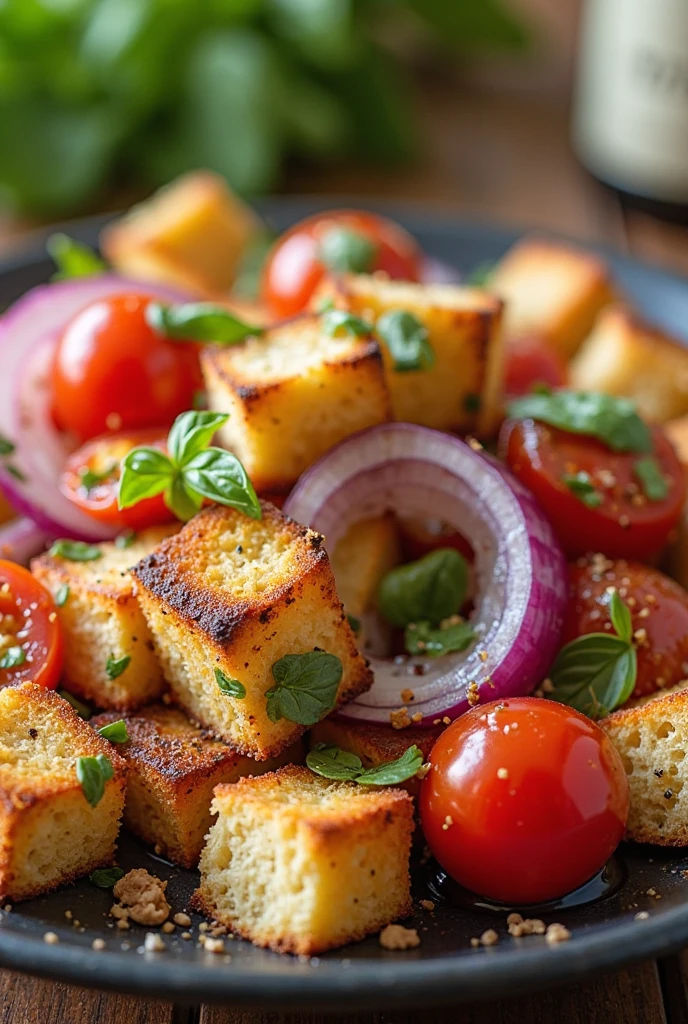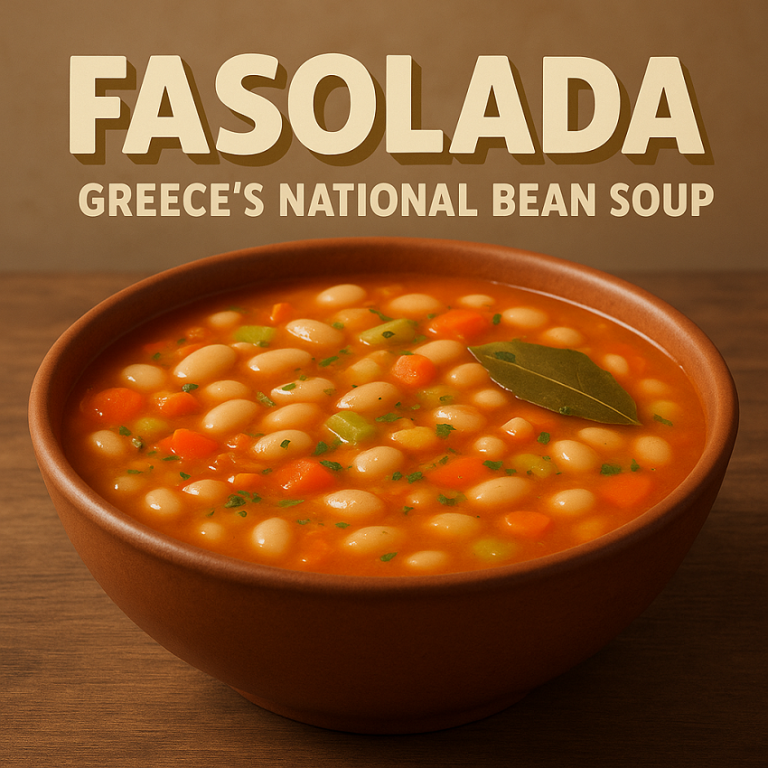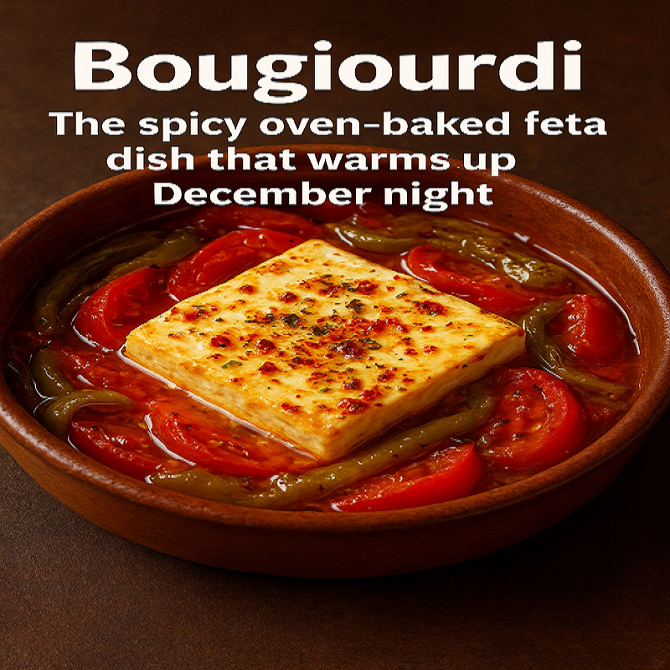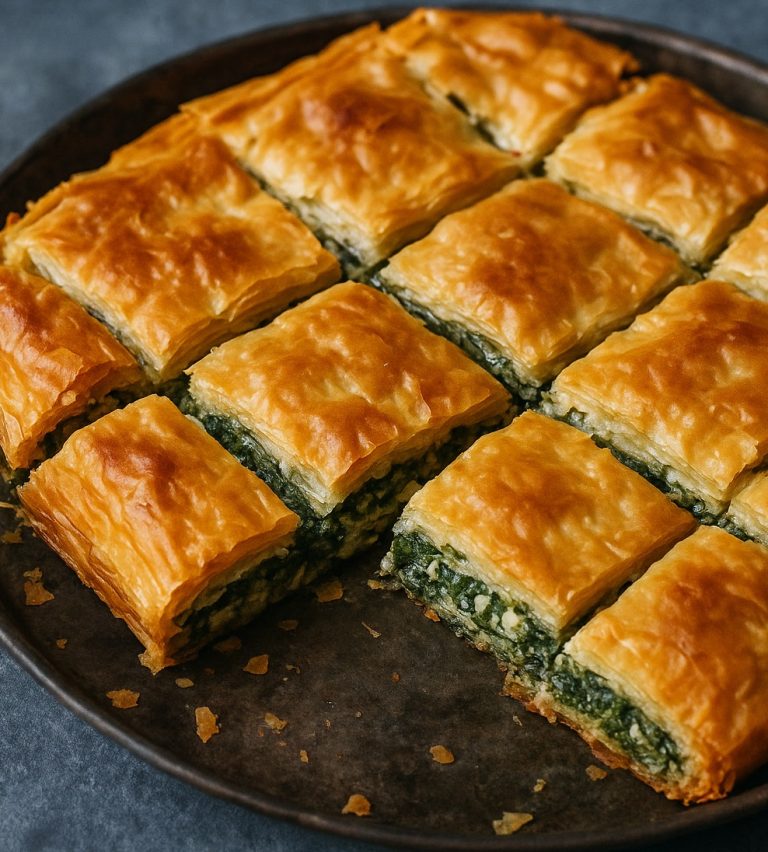
Greek Panzanella is a vibrant salad that beautifully showcases the flavors of Greek cuisine. This dish features a colorful mix of fresh vegetables, aromatic herbs, and tangy feta cheese, all brought together by crusty bread. It’s perfect for summer picnics, barbecues, or as a light, refreshing dinner option.
The Origins of Panzanella
While the exact origins of Panzanella are somewhat murky, the dish is rooted in the idea of utilizing stale bread to minimize food waste. Traditionally, it was created by farmers who combined leftover bread with whatever vegetables were on hand. The Greek version adds bold ingredients that reflect local culinary traditions.
Ingredients
Key Components
- Stale Bread: Use crusty bread like ciabatta, sourdough, or a rustic country loaf, torn into bite-sized pieces. This bread will soak up the dressing while maintaining its texture.
- Tomatoes: Ripe, juicy tomatoes are essential for flavor. Heirloom or cherry tomatoes work wonderfully, providing sweetness and acidity.
- Cucumbers: Fresh cucumbers add a crisp texture and refreshing taste. Persian cucumbers are a great choice for their thin skin and mild flavor.
- Red Onion: Thinly sliced red onion provides a sharp, tangy flavor that enhances the overall taste.
- Bell Peppers: Sliced bell peppers (red, yellow, or orange) add color, sweetness, and crunch to the salad.
- Feta Cheese: Crumbled feta introduces a salty, creamy element that enhances the dish’s flavor profile.
- Kalamata Olives: These briny olives add depth and a distinct flavor.
- Fresh Herbs: Dill, oregano, and parsley contribute freshness and aroma that tie the salad together.
- Olive Oil and Red Wine Vinegar: A good quality extra virgin olive oil and red wine vinegar are used for dressing, adding richness and brightness.
Preparation Steps
Simple Recipe
- Prepare the Bread: Tear the stale bread into bite-sized pieces. If using fresh bread, lightly toast it in the oven until golden and crisp.
- Soak the Bread: Place the torn bread in a bowl of water for a few minutes. Drain and gently squeeze out excess moisture, ensuring the bread is softened but not soggy.
- Chop the Vegetables: In a large bowl, combine chopped tomatoes, diced cucumbers, sliced bell peppers, and thinly sliced red onion.
- Add Olives and Cheese: Toss in Kalamata olives and crumbled feta cheese. The olives should be pitted, and you can either leave them whole or slice them in half.
- Combine: Add the soaked bread to the vegetable mixture, gently mixing everything together.
- Dress the Salad: Drizzle with olive oil and red wine vinegar. Season with salt and freshly cracked black pepper. Toss gently to combine all ingredients.
- Add Fresh Herbs: Sprinkle a generous amount of chopped fresh herbs over the salad. Dill and oregano work particularly well.
- Rest: Allow the salad to sit for about 20-30 minutes at room temperature. This resting period allows the flavors to meld and the bread to absorb the dressing.
Variations and Customizations
Greek Panzanella is incredibly versatile, allowing for various adaptations based on personal preferences or seasonal ingredients. Here are a few ideas to customize your salad:
- Proteins: Add grilled chicken, shrimp, or chickpeas for a heartier meal. Feta-stuffed grilled peppers can also be a delightful addition.
- Additional Vegetables: Incorporate seasonal vegetables like radishes, zucchini, or artichokes for added texture and flavor.
- Herb Variations: Experiment with different herbs such as mint or basil for a unique twist.
- Nuts and Seeds: Toasted pine nuts, walnuts, or sunflower seeds can add a nice crunch and nutty flavor.
- Spicy Kick: For those who enjoy heat, consider adding sliced jalapeños or a drizzle of chili oil.
Serving Suggestions
Greek Panzanella can be served as a light main course or as a side dish alongside grilled meats, seafood, or various spreads. It pairs wonderfully with dishes like grilled lamb, chicken souvlaki, or roasted vegetables.
This salad also makes an excellent addition to a mezze platter alongside hummus, tzatziki, and pita bread, creating a colorful and varied spread that encourages sharing and communal dining.
Conclusion
Greek Panzanella is a celebration of fresh flavors and the beauty of seasonal ingredients. Its ease of preparation and adaptability make it a beloved dish in many households. Whether enjoyed on its own or as a complement to other dishes, Greek Panzanella is sure to please any palate. So grab your freshest ingredients and savor this delightful salad.



